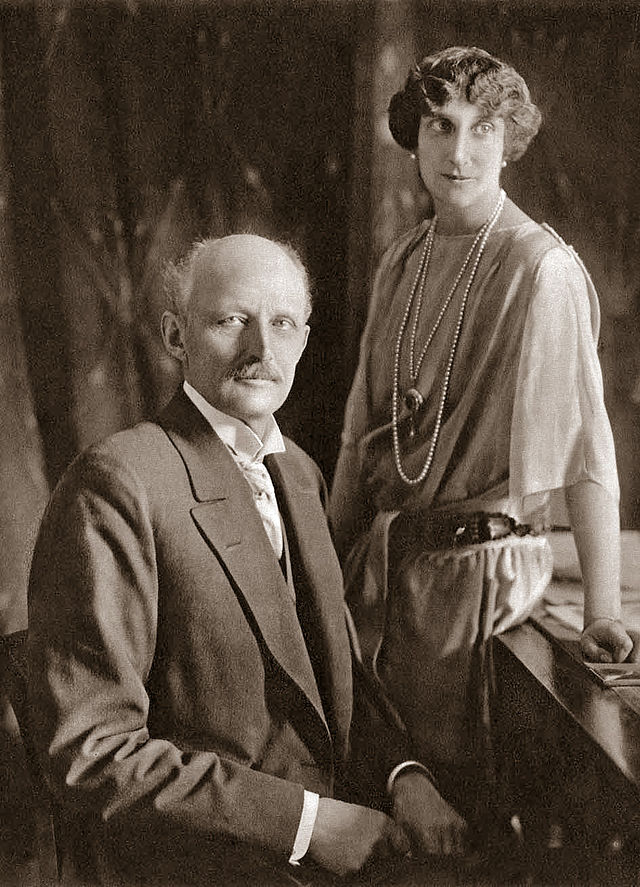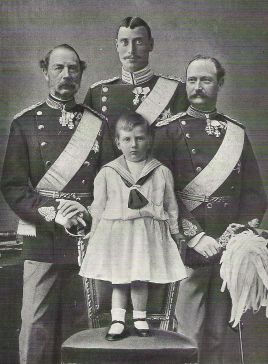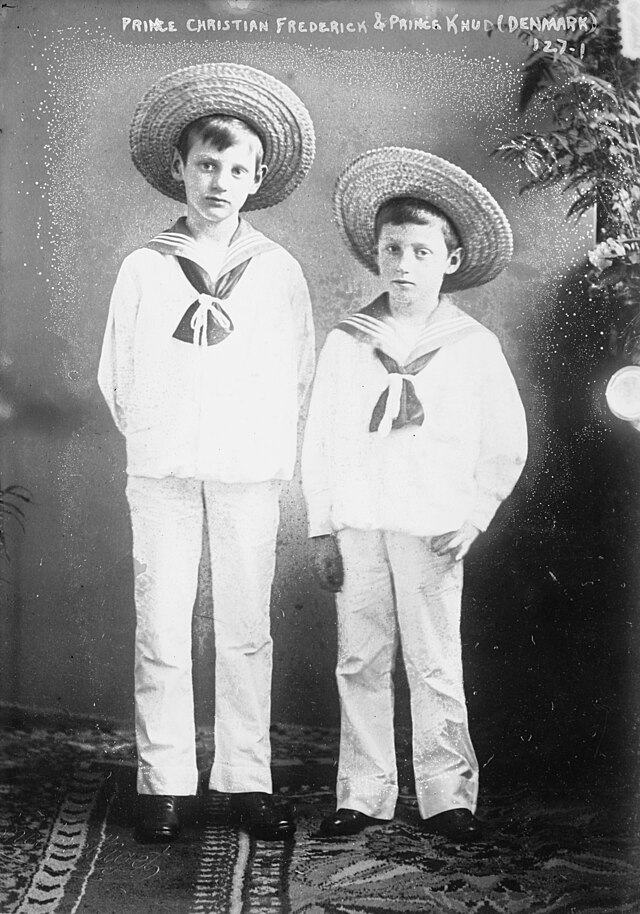by Scott Mehl
© Unofficial Royalty 2015
Amalienborg
Amalienborg (often mistakenly referred to as Amalienborg Palace) is one of the primary residences of the Danish Royal Family. It is comprised of four individual palaces built around a square in the Frederiksstaden district of Copenhagen.

Sophie Amalienborg, c1740. source: Wikipedia
The site originally held another palace, called Sophie Amalienborg, built by Queen Sophie Amalie (consort of King Frederik III), who lived there until her death in 1685. Several years later, the palace was destroyed by fire but was rebuilt. The second palace was later torn down during the development of the Frederiksstaden district in 1748.
On the place where the old palace had stood, an octagonal square was designed with four identical mansions which housed some of the most distinguished members of the Danish nobility. Construction of the mansions began in 1750 and the first two were completed in 1754 – Moltke’s Palace and Levetzau’s Palace (the two palaces on the western side of the square). The remaining two – Brockdorff’s Palace and Schack’s Palace – were completed in 1760.

Equestrian statue of King Frederik V. source: Wikipedia
In the center of the square is an equestrian statue of King Frederik V, who was the one who developed Frederiksstaden and Amalienborg. It was commissioned by A.G. Moltke, the Lord High Steward, and was unveiled in 1771.
In 1794, Christiansborg Palace (which was the primary residence of the King) was destroyed by fire, and the royal family was forced to find a new home in Copenhagen. Within days of the fire, the King had purchased Moltke’s Palace and Schack’s Palace, and the two became the new residences of the royal family. King Christian VII lived in Moltke’s Palace, while his son and heir, the future King Frederik VI, lived in Schack’s Palace. A colonnade was later added connecting the two palaces. Soon, the King acquired the other two mansions, and eventually, all four were renamed for Danish sovereigns who had lived in them.

Christian VII’s Palace. source: Wikipedia, Wolfgang Sauber
Christian VII’s Palace
Christian VII’s Palace (formerly Moltke’s Palace) is on the southwest corner of the square. It was the first mansion completed, built for Adam Gottlob Moltke, the Lord High Steward, and lifelong friend of King Frederik V. In 1794 it became the residence of King Christian VII until his death in 1808. It was used for many years by the Royal Household, and then by the Ministry of Foreign Affairs from 1852-1885. In more recent years, it housed the kindergarten for Crown Prince Frederik and Prince Joachim, as well as several apartments for other members of the royal family. Crown Prince Frederik lived here for several years after his marriage in 2004. Today, Christian XI’s Palace is used for official functions and entertaining, as well as accommodations for official guests.

Christian IX’s Palace. source: Wikipedia
Christian IX’s Palace
Christian IX’s Palace (formerly Schack’s Palace) is on the southeast corner of the square. It was originally to be the home of Severin Løvenskjold, a Privy Councillor, but financial difficulties forced him to give up the home. It was taken over by Countess Anne Sophie Schack, from whom it got its name. In 1794, it became the home of the future King Frederick VI until his death in 1839. His wife remained at the palace until her death in 1852, after which it was used by the Supreme Court and the Ministry of Foreign Affairs. It later became the home of King Christian IX until his death in 1906. The palace remained unused for many years, and after extensive restoration became the home of Queen Margrethe II and Prince Henrik upon their marriage in 1967. Queen Margrethe II remains at Christian IX’s Palace to this day.
Frederik VIII’s Palace
Frederik VIII’s Palace (formerly Brockdroff’s Palace) is in the northeast corner of the square and stands out from the others as the only one with a clock on the front of the building. Built for Count Joachim Brockdorff, it was later acquired by A.G. Moltke after Brockdorff’s death in 1763. In 1765, Moltke sold it to the Crown, and from 1767 until 1827 it housed the Military Academy. In 1828, it became the home of the future King Frederik VII who lived there until 1837. It then houses various members of the royal family until becoming the home of the future King Frederik VIII from 1869 until his death in 1906. Some years after his widow’s death in 1926, the palace was once again renovated and became the home of the future King Frederik IX and Queen Ingrid, until the Queen’s death in 2000. A five-year restoration project began in 2004 and in 2010, the palace became the residence of the then Crown Prince Frederik and his family. Following the renovation, the palace was opened to the public for several months before the family took up residence. In addition to structural repairs and restoration, the couple chose various artists to create murals and art installations in many of the official rooms.

Christian VIII’s Palace. source: Wikipedia
Christian VIII’s Palace
Christian VIII’s Palace (formerly Levetzau’s Palace) is on the northeast corner of the square. It was built for Count Christian Levetzau, a Privy Councillor, and was completed in 1760. Levetzau died in 1756 but it remained within his family. In 1794, with the condition that Levetzau’s arms would remain on the outside of the building, the palace was sold to Hereditary Prince Frederik, the half-brother of King Christian VII. Frederik’s son, the future King Christian VIII, took over the palace upon his father’s death. After Christian VIII’s death, the palace remained the home of his widow, Queen Caroline Amalie, until 1881. After being used by the Foreign Ministry from 1885 to 1898, it again became a royal residence as the home of the future King Christian X and Queen Alexandrine. Following their deaths, it was the home of Hereditary Prince Knud and Hereditary Princess Caroline-Mathilde. In the 1980s, the palace housed the apartment of Crown Prince Frederik until his marriage in 2004 (at which time, he took on a larger apartment in Christian VII’s Palace). Today, Christian VIII’s Palace contains storage for the Sovereign’s Reference Library and the apartments of Prince Joachim, Princess Benedikte, and Queen Anne-Marie of Greece. It is also the site of the Amalienborg Museum, which gives a glimpse into royal life as it would have been many years ago.
Learn more about the other Danish Royal Residences here!
This article is the intellectual property of Unofficial Royalty and is NOT TO BE COPIED, EDITED, OR POSTED IN ANY FORM ON ANOTHER WEBSITE under any circumstances. It is permissible to use a link that directs to Unofficial Royalty.

























